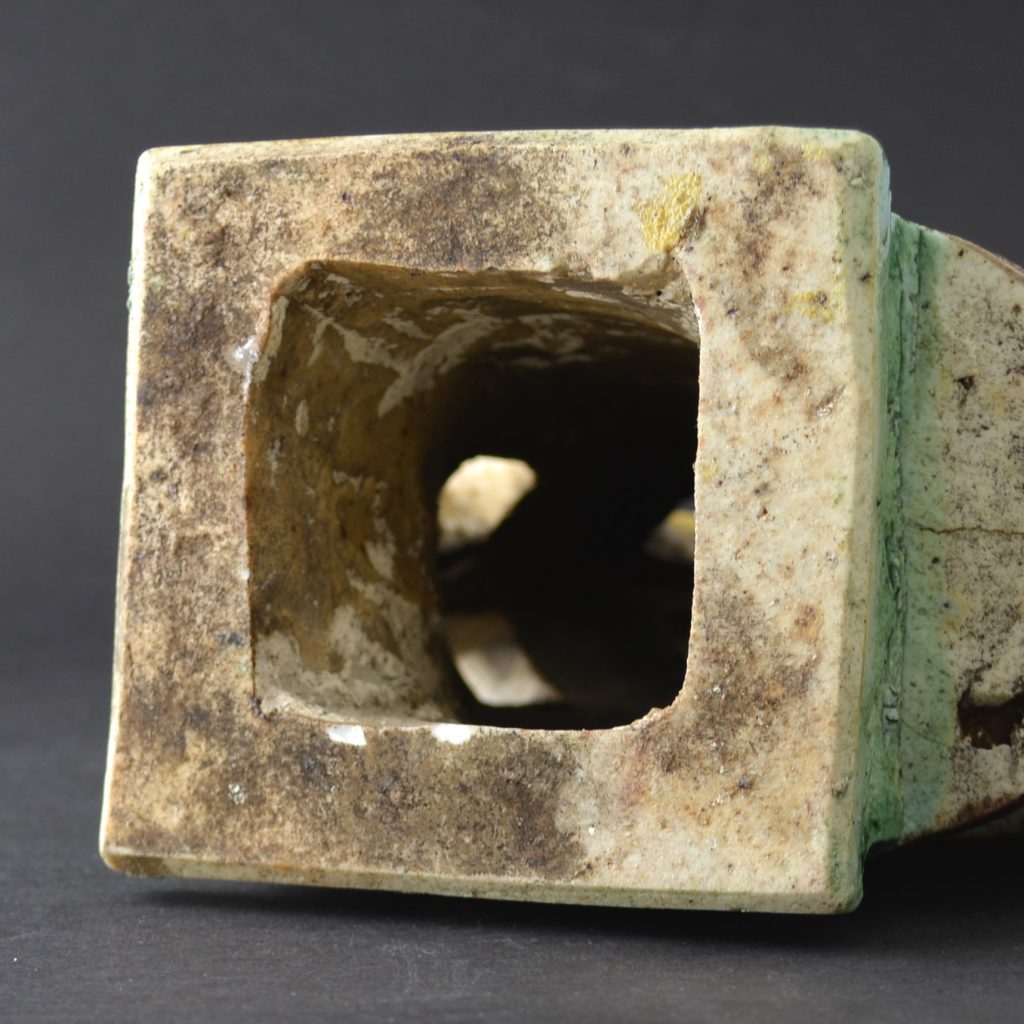
A Pair of Kangxi Biscuit Porcelain Finials in the Form of Dragon Fish c.1690 – 1720.
A pair of rare Kangxi biscuit porcelain Egg and Spinach finials or architectural fittings in the form of fish-dragons c.1690 – 1720. These extraordinary Kangxi porcelain objects have notches in the sides which were presumably made to attach wing like fins. No objects like this appear to be recorded in the literature.
SOLD
- Condition
- No damage but clearly there are missing elements, porcelain wings would have originally fitted in the large rectangular slots, the small holes would possibly have been for a type of pin to attach them to the bodies. The tongues show the remians of cold painting. There is a white residue in the bases and to a small extent the slots, this is the remains of a rice starch based glue that would have been used to attach the wings in place and the finials to what ever they were joined to.
- Size
- Height : 30.5 cm (12 inches)
- Provenance
- N/A
- Stock number
- 24623
Information
Egg and Spinach Decoration :
This is another of those Western terms used to categorize Chinese ceramics. Unlike many other terms the West has applied to Chinese porcelain, for example Kraak ware or Transitional porcelain, this one is more strait forward and less contentious. The group is characterized by the enamel decoration being directly on to the unglazed `biscuit` porcelain body, it is possibly more correct to describe this as a stained glaze rather than an enamel. The piece was then finished with a clear glaze. Egg and Spinach relate closely to Tang Sancai pottery of the 8th century, these lead glazed ware also have colours that run into one another. The blotchy enamel colours of Egg and Spinach consist of a rich green, a brownish aubergine and yellow with areas of body colour showing through the clear glaze (no doubt created by wax resist). This type of decoration could sometimes include areas, for example the interior of a bowl, decorated in blue and white. These pieces appear to date to the early 18th century rather than earlier. Egg and Spinach itself was popular in China from the Transitional period of the middle of the 17th century until the second quarter of the 18th century. In my view most of the Egg and Spinach was produced in the early 18th century but the literature often suggests an earlier date. Clearly the pieces with blue and white decoration relate to closely to late Kangxi and Yongzheng porcelain. The Ca Mau Cargo had many small pieces with Egg and Spinach decoration, this wreck dates to the Yongzheng period (1723-1735). Indeed most pieces with this distinct colour scheme were small. Egg and Spinach was used in the 19th century, many of these objects were copies of, or at least based on, the original 17th and 18th century examples. In late 19th and early 20th century Europe it was wildly collected, often with other biscuit decorated Chinese porcelain, collectors such as Mrs. Nellie Ionides (1883 – 1962) were at the forefront of this trend.







